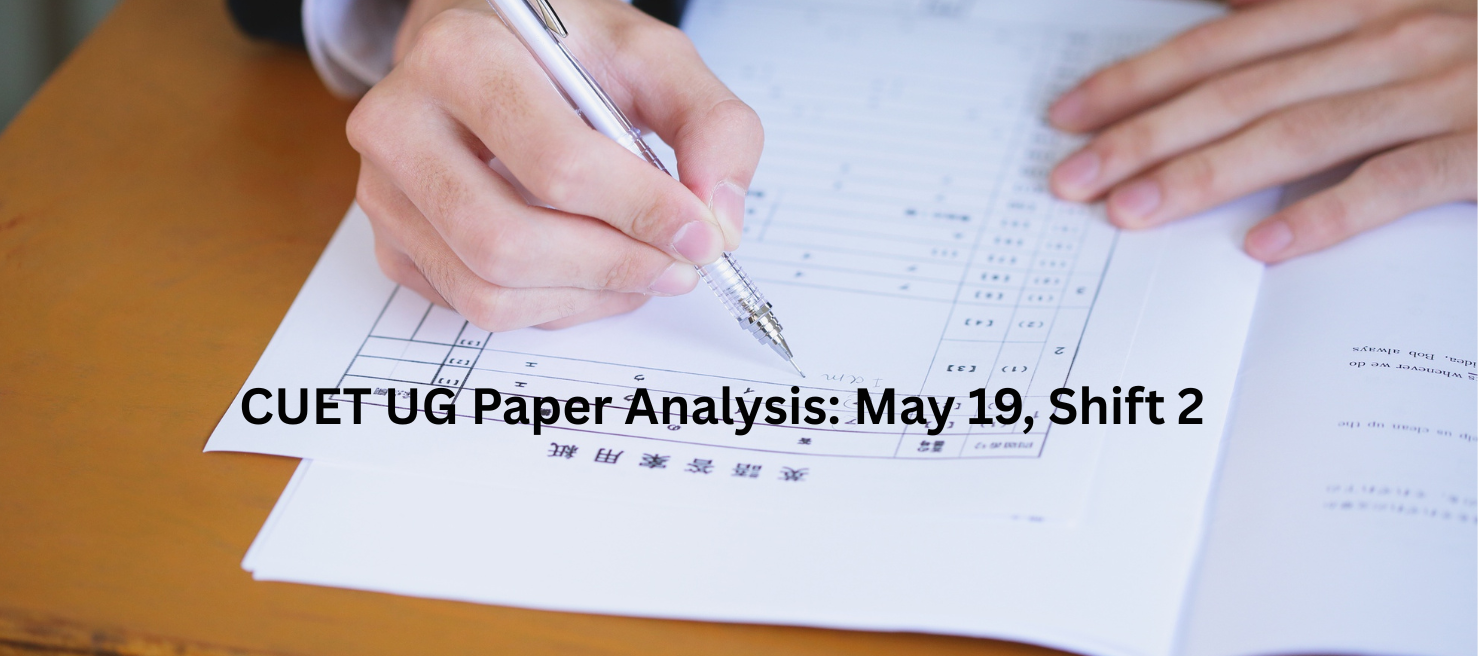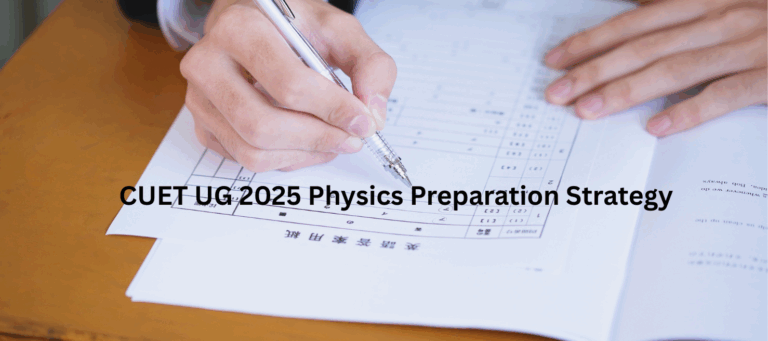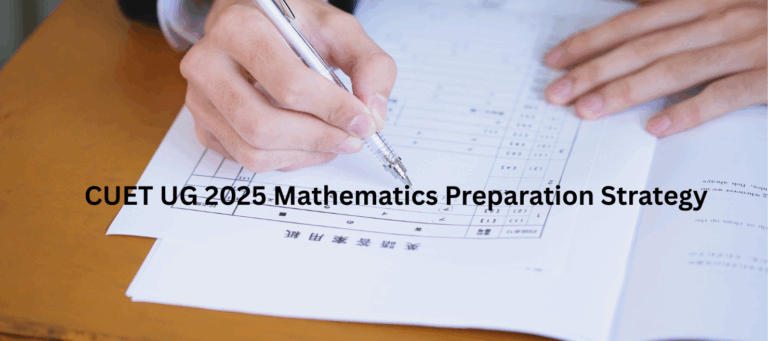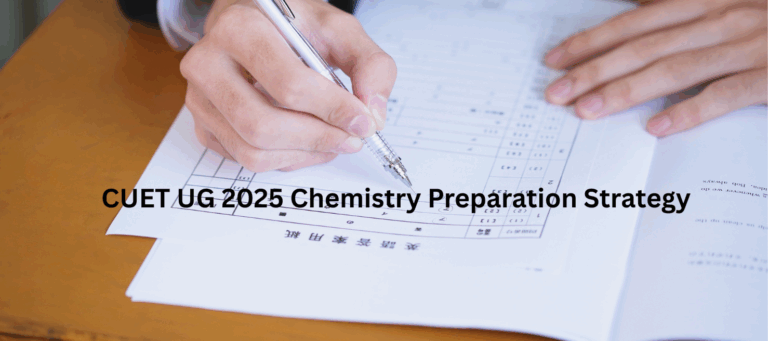
The CUET exam date 2025 for the first shift on May 19 was conducted from 3 PM to 6 PM for the General Aptitude Test, English, Chemistry, and Physics subjects. Some students found the English paper to be moderate, followed by Physics. Quant/Maths had around 18–20 questions with a moderate level of difficulty.
Check out CollegeDost for a detailed breakdown of the exam, including subject-wise difficulty levels, question types, and student feedback!
- May 13th CUET UG Paper Analysis Shift 1
- May 13th CUET UG Paper Analysis Shift 2
- May 14th CUET UG Paper Analysis Shift 1
- May 14th CUET UG Paper Analysis Shift 2
- May 15th CUET UG Paper Analysis Shift 1
- May 15th CUET UG Paper Analysis Shift 2
- May 16th CUET UG Paper Analysis Shift 1
- May 16th CUET UG Paper Analysis Shift 2
- May 19th CUET UG Paper Analysis Shift 1
- May 20th CUET UG Paper Analysis Shift 1
- May 20th CUET UG Paper Analysis Shift 2
- May 21st CUET UG Paper Analysis Shift 1
- May 21st CUET UG Paper Analysis Shift 2
- May 22nd CUET UG Paper Analysis Shift 1
- May 22nd CUET UG Paper Analysis Shift 2
- May 23rd CUET UG Paper Analysis Shift 1
- May 23rd CUET UG Paper Analysis Shift 2
- May 24th CUET UG Paper Analysis Shift 1
- May 24th CUET UG Paper Analysis Shift 2
- May 26th CUET UG Paper Analysis Shift 1
- May 26th CUET UG Paper Analysis Shift 2
- May 27th CUET UG Paper Analysis Shift 1
- May 27th CUET UG Paper Analysis Shift 2
- May 28th CUET UG Paper Analysis Shift 1
- May 28th CUET UG Paper Analysis Shift 2
- May 29th CUET UG Paper Analysis Shift 1
- May 29th CUET UG Paper Analysis Shift 2
- May 30th CUET UG Paper Analysis Shift 1
- May 30th CUET UG Paper Analysis Shift 2
- May 31st CUET UG Paper Analysis Shift 1
- June 2nd CUET UG Paper Analysis Shift 1
- June 2nd CUET UG Paper Analysis Shift 2
- June 3rd CUET UG Paper Analysis Shift 1
- June 3rd CUET UG Paper Analysis Shift 2
CUET UG 2025 Exam Overview
Below is the exam overview of CUET UG 2025.
| Exam Particulars | Exam Details |
| Total Subjects Offered | 37 (13 Languages + 23 Domain Subjects + 1 General Aptitude Test) |
| Medium | 13 Indian languages (Assamese, Bengali, English, Gujarati, Hindi, Kannada, Malayalam, Marathi, Punjabi, Odia, Tamil, Telugu, and Urdu) |
| Subjects to Choose | Up to 5 subjects |
| Total Marks of CUET Exam | 250 |
| Questions per Subject | 50 Compulsory Questions |
| Marking Scheme | +5 for correct answer, -1 for incorrect answer, and no marks for unattempted questions |
| Exam Mode | CBT Mode |
| Duration | 60 minutes per subject |
Where To Check CUET UG 2025 Paper Analysis
To get a comprehensive breakdown of subject-wise paper analysis, the number of good attempts, and various feedback from the students, you can check CollegeDost. Our expert analysis of all the subjects will give you an idea of the difficulty level of the papers and will help you in understanding the overall difficulty trends.
Check out CollegeDost for all the previous CUET UG exam analysis from 13th May and get an idea of how you should prepare for the coming exams. Analyzing previous shifts and attending analysis sessions and classes based on trending topics is beneficial for preparation
👉 Check CUET UG 2025 Exam Analysis on CollegeDost
CUET UG 2025 Exam: Shift Timings
Check the CUET UG 2025 exam shift timings in the table below.
| CUET UG 2025 Slot Time for 19th May | Reporting Time | Gate Closing Time | Shift Timing |
| CUET UG 2025 Shift 1 | 7 AM | 8.30 AM | 9 AM to 12 PM |
| CUET UG 2025 Shift 2 | 1 PM | 2.30 PM | 3 PM to 6 PM |
CUET UG 2025 Exam Analysis: Based on Number of Attempts
Candidates can check the number of good attempts that they can expect in the exam from the following table.
| Sections | Average Attempts | Difficulty Level |
| General Aptitude (GAT) | 45–50 | Easy to Moderate |
| English | 45–50 | Easy to Moderate |
| Chemistry | 38–45 | Moderate to Tough |
| Physics | 35–45 | Easy to Moderate (time-pressured) |
CUET UG 2025 Exam Analysis: May 19 2025, Shift 2
The CUET exam date 2025 was conducted on May 19th, shift 2, for the General Aptitude Test, English, Chemistry, and Physics. As per the initial reaction of the students, the exam for the Shift 1 is considered to be Moderate. Check out the subject-specific analysis and weightage of each chapter.
CUET UG 2025 GAT Paper Analysis
The May 19th Shift 2 exam featured a well-balanced paper across sections of the GAT paper. Quant/Maths had around 18–20 moderate-level questions, mostly from Arithmetic (Profit & Loss, SI/CI, Averages), along with Algebra, Geometry, Probability, and Coordinate Geometry. Reasoning was rated easy, with ~15 questions covering Series, Coding-Decoding, Analogy, Classification, Blood Relations, Direction, Calendar, and image-based puzzles. General Knowledge was moderate, with 15–19 factual questions spanning Awards, Books, History, Geography, Science (Periodic Table, Neutrons, IUPAC), Static GK, Current Affairs, and unique topics like Rigvedic Rivers and epithets for cities.
| Sections | No. of Questions | Difficulty | Key Topics Covered |
| Quant / Maths | 18–20 | Moderate | Arithmetic: Profit & Loss, Percentage, Average, SI/CI, Boats & Streams, Speed-Time-Distance, Time & Work Algebra: AP, Mean-Median-Mode, LCM-HCF Geometry: Triangles, Mensuration (Cube, Cone, Cylinder, Sphere) Probability, Coordinate Geometry, Sum of Primes |
| Reasoning | 15 (avg) | Easy | Series (Double Series) Coding-Decoding (+2, -3, etc.) Analogy, Classification (Odd One Out) Blood Relations (Equation-based) Direction, Calendar Seating Arrangement (Circular) Mirror Image, Embedded/Hidden Figure, Picture Series, Assertion-Reason |
| General Knowledge | 15–19 | Moderate | Awards: Sahitya Akademi, CK Nayudu, Dadasaheb Phalke Books & Authors (2+ questions repeated across shifts) History: Dynasties, Battles, Chronology, Match the Column Geography: Rivers, Dams, States, Cities on Riverbanks Science: Neutron, Electron, Proton, IUPAC Naming, Periodic Table Static GK: Titles like “Missile Man,” “Father of Evergreen Revolution” Current Affairs: Summits, ASEAN, Ministries Miscellaneous: Epithets (e.g., Manchester of South), State Capitals, Schemes (MSME), Rigvedic Rivers |
General Awareness-Chapterwise Weightage
This section highlights the importance and distribution of different subjects within the general awareness field. Recognizing the emphasis placed on each chapter can improve overall evaluations connected to general awareness.
| Category | Expected Questions |
| Geography | 7 |
| Science | 4 |
| Personalities | 4 |
| Polity | 3 |
| Defence | 2 |
| Awards | 2 |
| Sports | 1 |
| Currency | 1 |
| Miscellaneous | 1 |
Logical reasoning-Chapterwise Weightage
| Topic | Expected Questions |
| Visual Reasoning | 4 |
| Series | 2 |
| Coding-Decoding | 2 |
| Arrangement | 2 |
| Clocks | 2 |
| Analogy | 1 |
| Family Tree | 1 |
| Calendar | 1 |
| Data Sufficiency | 1 |
| Directions | 1 |
| Statement-Conclusion | 1 |
Numerical Ability-Chapterwise Weightage
| Topic | Expected Questions |
| Time and Work | 2 |
| Ratio | 2 |
| Simplification | 1 |
| Fractions | 1 |
| HCF-LCM | 1 |
| Problems on Age | 1 |
| Percentage | 1 |
| Profit, Loss & Discount | 1 |
| Simple Interest | 1 |
| Area | 1 |
| Volume | 1 |
| Speed, Time, Distance | 1 |
| Mean & Mode | 1 |
| Triangle | 1 |
| Trigonometry | 1 |
CUET UG 2025 English Paper Analysis
The English section was rated easy to moderate, with some students finding RC passages slightly tough due to length and scrolling, while others found the paper smooth. Most students attempted 45–50 questions confidently. Around 10–16 Reading Comprehension questions were asked on topics like scientific reports, global warming, and conversational dialogues. Sentence rearrangement (6–12 questions) was easy and solvable through logic. Vocabulary-based questions (12–15) focused on uncommon words like truculent, succinct, and disgruntled. Check the detailed analysis in the table below.
| Topics | Details |
| Overall Difficulty | Easy to Moderate. Some found passages tough, others found the paper easy. |
| Student Attempts | High — Many students attempted 45–50 questions confidently. |
| Reading Comprehension (RC) | 10–16 Questions. Topics: • Scientific Report • Global Warming • Conversations: Husband–Wife, Father–Daughter • One language-based RC • Some passages required extra scrolling and rereading |
| Sentence Rearrangement | 6–12 Questions. Reported as easy and logically solvable via elimination. |
| Vocabulary & Word Usage | 12–15 Questions. Focus on difficult/uncommon words. Included: • Succinct (concise) • Truculent, Pugnacious (aggressive) • Genteel (polite/refined) • Disgruntled (dissatisfied) |
| Idioms & Phrases | Included idioms like: • Break a leg • Black sheep • Bad egg Covered in class sessions. |
| One Word Substitution | Present, but specific examples not recalled. |
| Phrasal Verbs | 1–2 Questions. Focus on verbs like Take, Come, Carry, Break, and Bring. |
| Figures of Speech | 1 Matching-type Question. Topics: Simile, Metaphor, Personification, Onomatopoeia. |
| Poetic Extract | Appeared in one shift — a rare inclusion. |
| Foreign Words | Examples: Déjà vu, Comment ça va — noted for their novelty. |
| Grammar | Some students reported no grammar-based questions in their shift. |
| Question Type Mix | Included Matching, Elimination-based MCQs, and RC-heavy layout. |
CUET English Chapterwise Weightage
| Topics | Number of Questions |
| Comprehension | 15 |
| Parts of speech | 3–4 |
| Para jumbles | 3–4 |
| Synonyms and antonyms | 2–3 |
| Active/passive voice | 3–4 |
| Fill in the blanks | 3–4 |
| Incorrect/correct statement | 3–4 |
| Phrases and meaning | 5–6 |
CUET UG 2025 Chemistry Paper Analysis
The Chemistry section was moderate to tough, though some students found it easy to moderate with time constraints. The paper included a mix of conceptual and application-based questions, largely aligned with the NCERT. Inorganic Chemistry dominated with questions on Periodic Table trends and Coordination Compounds, followed by Organic Chemistry (IUPAC naming, reactions) and Physical Chemistry (numericals on Mole Concept, Thermodynamics, Equilibrium).
| Topics | Details |
| Overall Difficulty | Moderate to Tough (some found it Easy–Moderate with time pressure). |
| Question Nature | Mix of conceptual and application-based; mostly NCERT-aligned with a few deeper questions. |
| Dominant Subfields | Inorganic Chemistry: Periodic Table trends, Coordination Compounds (most questions) Organic Chemistry: Reaction mechanisms, IUPAC naming (2–3 questions) Physical Chemistry: Mole Concept, Thermodynamics, Equilibrium (Numericals) |
| Common Topics | Neutrons, Electrons, Protons Fluorine/Chlorine arrangement Periodic Table IUPAC Naming (also seen in GAT) NCERT-based questions with varied depth |
CUET Chemistry-Chapterwise Weightage
| Topics | Number of Questions |
| Solid State | 4 |
| Electrochemistry & Solutions | 5 (Case study – Slightly difficult) |
| Chemical Kinetics | 2–3 |
| P Block Elements | 2–3 |
| D and F Block Elements | 5 (Case study – Easy) |
| Coordination Compounds | 5–6 (Moderately difficult) |
| Alcohols, Phenols, and Ethers | 4–5 |
| Aldehydes, Ketones, and Carboxylic Acids | 3–4 |
| Organic Compounds Containing Nitrogen | 4 |
| Polymers | 1–2 |
| Chemistry in Everyday Life | 1–2 |
CUET UG 2025 Physics Paper Analysis
The Physics section was rated easy to moderate in difficulty, with a balanced mix of approximately 15–18 numericals and 30–32 theory-based questions. Most numerical problems were formula-based and straightforward, making them easy to solve for students. Effective time management played a crucial role, as attempting all 50 questions required a smart approach — prioritizing easier questions first and leaving tougher ones for the end. Overall, students who focused on formula revision and time efficiency found the paper manageable.
| Topics | Details |
| Difficulty Level | Easy to Moderate |
| Question Distribution | Numericals: Approx 15–18 questions Theory: Approx 30–32 questions |
| Nature of Numericals | Mostly formula-based and straightforward |
| Preparation Tip | Revise all important formulas thoroughly |
| Time Management | Attempt easier questions first, leave tougher ones for later |
| Exam Strategy | Efficient time usage is key to completing all 50 questions within the limit |
CUET Physics – Chapterwise Weightage
| Sections | Number of Questions |
| Electrostatics | 8 |
| Current Electricity | 7 |
| Magnetic Effects of Current and Magnetism | 8 |
| Electromagnetic Induction & A.C. | 6 |
| Electromagnetic Waves | 1 |
| Optics | 8 |
| Dual Nature of Matter and Radiation | 5 |
| Atoms and Nuclei | 4 |
| Electronic Devices | 3 |
CUET UG 2025: NTA Revises Accountancy Paper Pattern
The accounting paper pattern for CUET UG 2025 has been updated by the National Testing Agency (NTA). Candidates can now select questions from “Unit V: Analysis of Financial Statements” or “Optional Unit V: Computerised Accounting System” starting on May 22, 2025.
Applicants who took the test between May 13 and May 16, 2025, will have the option of keeping their score or retaking the test using the updated format. NTA will soon release comprehensive opt-in instructions.

CUET UG 2025 Accountancy Unit 5 Syllabus
| Topics | Subtopics / Details |
| Analysis of Financial Statements | |
| Financial Statements of a Company | – Preparation of simple financial statements – Prescribed format with major headings only |
| Financial Analysis | – Meaning, significance, purpose, limitations |
| Tools for Financial Analysis | – Comparative Statements – Common Size Statements |
| Accounting Ratios | – Meaning and objectives – Types: • Liquidity Ratio • Solvency Ratio • Activity Ratio • Profitability Ratio |
| Cash Flow Statement | – Meaning and objectives – Preparation with adjustments for: • Depreciation • Dividend & Tax • Sale & Purchase of Non-Current Assets (as per revised ICAI standards) |
| Optional: Computerised Accounting System (CAS) | |
| CAS Overview | – Concepts and types – Features, advantages, limitations |
| Structure of CAS | – Chart of accounts – Codification – Hierarchy of account heads |
| Electronic Spreadsheet Applications | – Features and uses in accounting – Generating accounting information – Preparing: • Depreciation Schedules • Loan Repayment Schedules • Payroll Accounting – Use of Graphs and Charts |
CUET Exam Syllabus 2025
Check the CUET exam syllabus and types of probable questions in the table below.
| CUET exam syllabus | Question Types |
| Language Subjects: Language to be tested through Reading Comprehension (based on different types of passages–Factual, Literary, and Narrative), Literary Aptitude, and Vocabulary | Language skills will be assessed through reading comprehension based on various types of passages, such as factual, literary, and narrative, along with evaluation of literary aptitude and vocabulary. |
| Domain Subjects: As per the NCERT syllabus | MCQS Based on Class 12 Syllabus |
| General Aptitude Test: General Knowledge, Current Affairs, General Mental Ability, Numerical Ability, Quantitative Reasoning (Simple application of basic mathematical concepts, arithmetic/algebra, geometry/mensuration/statistics), Logical and Analytical Reasoning | The section will assess General Knowledge, Current Affairs, General Mental Ability, Numerical Ability, Quantitative Reasoning (based on simple applications of basic mathematical concepts from arithmetic, algebra, geometry, and mensuration taught up to Grade 8), as well as Logical and Analytical Reasoning. |
Student Reviews For CUET UG 2025 May 19th Shift 2 Exam
Most students from different states found CUET UG 2025 Shift 2, which was held on May 19th, was moderate. Here is a summary of what students perceived about the exam.
English
Students’ Feedback: Students found the English section easy to moderate. Reading Comprehension passages were slightly lengthy but manageable, with most questions being direct. Sentence Rearrangement dominated the section and was considered scoring. Vocabulary questions were tricky, but many students used elimination strategies. Idioms, phrasal verbs, and figures of speech were also present. Several students attempted 48–50 questions confidently.
Quantitative Aptitude (Maths)
Students’ Feedback: The Maths section was moderately difficult, with a strong focus on arithmetic topics like Profit & Loss, Simple Interest, and AP. Most questions were formula-based and aligned with recent practice sessions. Some questions were time-consuming, but students who had revised formulas managed well.
Reasoning
Students’ Feedback: Reasoning was described as easy and familiar. Topics included Series, Coding-Decoding, Calendar, Direction, Blood Relations, and image-based puzzles. There were no questions from dice, syllogism, or Venn diagrams. Most students found this section quick to solve and highly attainable.
GK & Current Affairs
Students’ Feedback: Students found this section moderately tough due to factual and deep questions. It included a mix of Static GK, History, Geography, Awards, and International Affairs. Science-based GK (mainly Chemistry) was also present. While some students struggled, those who prepared for current affairs and NCERT science felt confident.
Physics
Students’ Feedback: Physics was a mix of 15–18 numericals and 30+ theory questions. Most numericals were direct and formula-based, making them easy if formulas were well-revised. However, time management was a key challenge. Students prioritize easier questions first.
Chemistry
Students’ Feedback: Chemistry was rated moderate. Inorganic Chemistry had the highest weightage, followed by basic Organic and Physical Chemistry. Topics included Periodic Trends, Coordination Compounds, and IUPAC naming. The paper was largely NCERT-based and concept-focused, with minimal surprises.
CUET UG 2025 Exam Day Guidelines
Given below are a few CUET UG 2025 exam day guidelines that students need to follow.
- Carry Only Required Items: Only take your printed admit card (with passport-size photograph), your valid photo ID (Aadhaar or PAN card), a transparent ballpoint pen, and a transparent water bottle. Candidates can check all the CUET exam details on the admit card and are advised to adhere to the instructions.
- Be On Time: Report to the exam center well in advance relative to your reporting time (7:00 AM for Shift 1 and 1:00 PM for Shift 2). If you are late, you will not be allowed to enter.
- Prohibited Items: Do not bring mobile phones, smart watches, electronic devices, bags, books, or food if not medically required (with documentation).
- Maintain Discipline: Be seated in your assigned seat, only do rough work on the sheets provided, and do not perform any unfair practice or make any noise in the exam hall.
- Time Management: It is a critical challenge across subjects, especially with lengthy sections like RC or Quant. It’s advised to tackle easy questions first.
- The Normalisation Factor: This factor will account for variations in difficulty across shifts. The focus should be on attempting as many questions with 100% accuracy.
CUET Dress Code For Females
| Category | Allowed | Not Allowed |
| Clothing | Half-sleeved, simple kurtis/tops | Full-sleeved, heavily embroidered, or layered clothing |
| Bottom Wear | Simple leggings, trousers, salwar | Skirts, jeans with extra pockets |
| Footwear | Slippers, flat sandals | Heels, closed-toe shoes, boots |
| Accessories | None | Jewelry (earrings, rings, bangles, bracelets, belts) |
| Electronic Items | None | Smartwatches, Bluetooth devices, and wired accessories |
CUET Dress Code 2025 for Males
| Category | Allowed | Not Allowed |
| Clothing | Half-sleeved, plain shirts or t-shirts | Full-sleeved shirts, layered clothing, and embroidery |
| Bottom Wear | Light trousers, simple jeans | Cargo pants, jeans with too many pockets |
| Footwear | Slippers, sandals | Shoes, sneakers, boots |
| Accessories | None | Watches, belts, caps, sunglasses, metallic items |
| Electronic Items | None | Smartwatches, Bluetooth devices, and wired accessories |
Things Allowed Inside the Examination Hall
- Transparent Water Bottle
- Admit Card (printed copy)
- Face Mask & Gloves (if applicable)
- Personal Hand Sanitiser (50 ml)
- Rough Sheets (provided by the exam centre)
- Passport-size Photograph (same as uploaded in the application)
- Simple Black/Blue Ballpoint Pen (if specified)
- Valid Photo ID Proof (Aadhar, PAN, Passport, etc.)
Things Not Allowed Inside the Examination Hall
- Books, Notes, or Any Study Material
- Mobile Phones & Smartwatches
- Wallets, Handbags, Sunglasses
- Bags, Pouches, or Any Items with Metal Components
- Electronic Gadgets (earphones, calculators, etc.)
- Jewellery, Caps, or Hats
- Food or Drinks (except water)
- Any Written or Printed Papers
What’s New In CUET UG 2025?
Check out some new changes introduced by UGC and which will be implemented from CUET UG 2025 onwards.
- Students can now take CUET UG exams in any subject, regardless of their Class 12th subjects.
- CUET UG will be conducted solely in CBT mode.
- CUET subjects have been reduced to 37 from 63. Teaching Aptitude, Entrepreneurship, and Legal Studies subjects has been removed.
- The duration of the test is 60 minutes for all the subjects.
- The GAT scores will decide the admission for the removed CUET subjects.
- There will be no optional questions.
Frequently Asked Questions
1. Were the Chemistry questions mostly from the NCERT in CUET UG 2025?
Yes, the paper was mostly NCERT-based, especially in Inorganic and Organic Chemistry, though some questions required deeper conceptual understanding.
2. Was there any unexpected topic in the English section of CUET UG 2025?
Yes, a poetic extract and foreign words like déjà vu and comment ça va appeared — a rare inclusion not seen in earlier shifts.
3. Did students face time management issues in Physics during CUET UG 2025?
Yes, due to the mix of approx 15–18 numericals and approx 30 theory questions, many found it hard to complete all 50 questions on time, despite the numericals being formula-based.
4. What is the CUET exam pattern for each subject?
Each subject paper of the CUET UG exam pattern consisted of 50 compulsory questions. Students need to complete each paper within 60 minutes.






